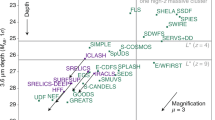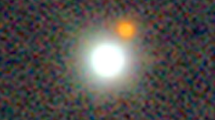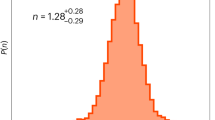Abstract
SOME years ago, Bahcall and Salpeter1 suggested that photons arriving from distant quasi-stellar objects (QSO) might not have the same Planck's constant, h, which we normally measure in the laboratory. In particular, they suggested a test which could be used to determine a dependence of h on the redshift parameter, z, of photons arriving from these objects. They proposed to measure the wavelength λ of such photons using a grating spectrometer. The photon energy ε could be independently measured by a prism instrument. The product  could then be directly determined and compared with the product hc, obtained using a laboratory source. Existing measurements already imply a constancy of hc to about 1 part in 103, where c and ν represent the photon speed and frequency.
could then be directly determined and compared with the product hc, obtained using a laboratory source. Existing measurements already imply a constancy of hc to about 1 part in 103, where c and ν represent the photon speed and frequency.
This is a preview of subscription content, access via your institution
Access options
Subscribe to this journal
Receive 51 print issues and online access
$199.00 per year
only $3.90 per issue
Buy this article
- Purchase on Springer Link
- Instant access to full article PDF
Prices may be subject to local taxes which are calculated during checkout
Similar content being viewed by others
References
Bahcall, J., and Salpeter, E. E., Ap. J., 142, 1677 (1965).
Greenstein, J. L., Ap. J., 152, 431 (1968).
Lynds, R., Ap. J., 157, L1 (1969).
Author information
Authors and Affiliations
Rights and permissions
About this article
Cite this article
HARWIT, M. Possible Method for determining the Planck Constant of Cosmic Photons. Nature 228, 845–847 (1970). https://doi.org/10.1038/228845b0
Received:
Issue Date:
DOI: https://doi.org/10.1038/228845b0
This article is cited by
-
Dimensionless cosmology
Astrophysics and Space Science (2012)
Comments
By submitting a comment you agree to abide by our Terms and Community Guidelines. If you find something abusive or that does not comply with our terms or guidelines please flag it as inappropriate.



